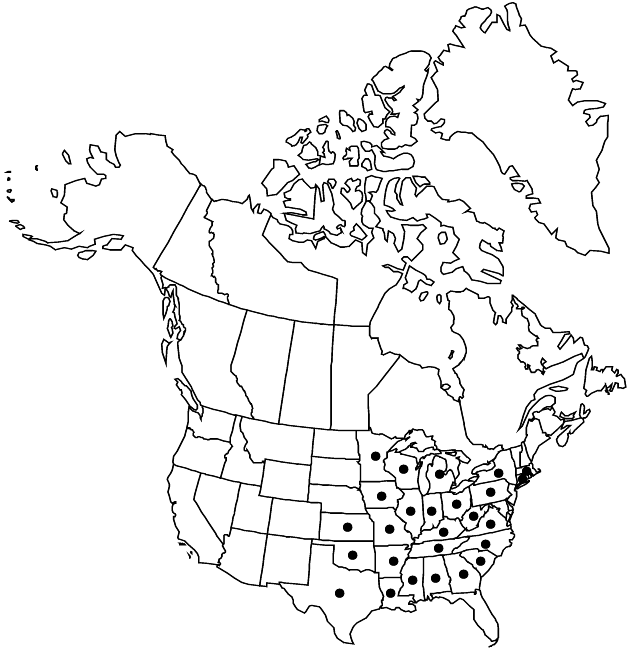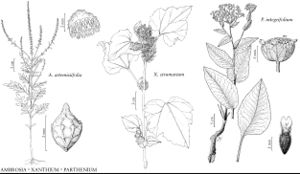Difference between revisions of "Parthenium integrifolium"
Sp. Pl. 2: 988. 1753.
FNA>Volume Importer |
FNA>Volume Importer |
(No difference)
| |
Revision as of 18:48, 24 September 2019
Perennials, 30–60(–100+) cm. Leaf blades ovate to lanceolate, 30–350+ × 20–120+ mm, margins usually crenate to serrate, sometimes coarsely toothed or somewhat lobed (then mostly toward bases), faces hispid to hirtellous or ± scabrous, gland-dotted. Heads radiate, borne in corymbiform to paniculiform arrays. Peduncles 1–8(–12+) mm. Phyllaries: outer 5(–6) lanceolate to broadly ovate, 3–5 mm, inner 5(–6) ± orbiculate, 4–6 mm. Pistillate florets 5(–6); corolla laminae ovate to oblong or orbiculate, 1–2+ mm. Disc florets 15–35+. Cypselae ± obovoid, 3–4+ mm; pappus-like enations 0 or 2(–4), erect to spreading, ± subulate or threadlike, fragile, 0.3–0.6+ mm. 2n = 72.
Phenology: Flowering May–Sep.
Habitat: Glades and barrens, prairies, disturbed sites
Elevation: 10–500 m
Distribution

Ala., Ark., Conn., Ga., Ill., Ind., Iowa., Kans., Ky., La., Mass., Mich., Minn., Miss., Mo., N.Y., N.C., Ohio, Okla., Pa., S.C., Tenn., Tex., Va., W.Va., Wis.
Discussion
As evidenced by the synonymy, Parthenium integrifolium as here circumscribed has been variously partitioned by other taxonomists. For the present, I see no justification for segregating species from, or for formal recognition of infraspecific taxa within P. integrifolium.
Selected References
None.
